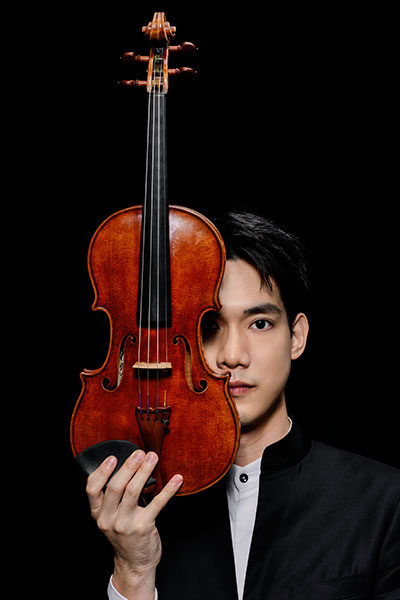International Violin Competition of Indianapolis presents Richard Lin, Violin and Thomas Hoppe, Piano in Review
Stern Auditorium at Carnegie Hall, New York, NY
June 24, 2022
Richard Lin. Remember the name. For he has everything required to take the world by storm.
It was one of those magical evenings music lovers live for. A new artist, supremely talented, fully formed, takes the stage. For a couple of hours the healing elixir of beautiful sound comforts and invigorates, and all is well with the world. When it is over, those who were lucky enough to have borne witness feel compelled to talk about it. How fortunate I am to have this platform!
Richard Lin is the Gold Medalist of the 10th Quadrennial International Violin Competition of Indianapolis, which took place in September of 2018. This Carnegie Hall debut was part of the prize, along with $75,000 and a recording contract. Mr. Lin’s accompanist was Thomas Hoppe, who was described in the program as “one of the finest piano partners and chamber musicians of his generation.” I agree: he is a masterful pianist and a sensitive musical partner. He is a Professor of Piano Chamber Music at the Folkwang University in Essen, Germany.
Before a note of music was played, Mr. Lin charmed the audience as, with a look of joy in his eyes, he perused the hall from his position center stage. He gazed first at the balcony, moved down to the dress circle, the second and first tiers and the parquet. Soft laughter showed the audience’s understanding of Mr. Lin’s appreciation for this revered space. We were all happy to be there together.
The program began with the Chaconne inG minor of Tomaso Antonio Vitali (1663- 1745). This piece has a rather unusual lineage. Its original manuscript was found in Dresden in 1800. It consisted of a violin part and continuo line. In 1867, Ferdinand David, a violinist and composer, wrote a piano accompaniment and embellished the violin part. In 1911, David’s version was rearranged by Léopold Charlier, who added virtuoso passages to the violin part. This is the version which we heard. The piece began with the pianist’s left hand playing the chaconne’s familiar pattern of descending fourths. The noble melody soon entered, played with simplicity and grace by the violin. As the piece progressed, we were mesmerized by Mr. Lin’s tonal beauty, rapid finger-work and compelling phrasing. When listening to the ease with which Mr. Lin flew through the fast passages, one felt that he had thoroughly displayed his technique. This was wrong: there was much more!
There followed the Sonata in E-flat major, Op. 18 by Richard Strauss. This sonata was started in 1887 and finished in 1888, as Strauss began to expand his harmonic vocabulary to incorporate that of Richard Wagner. It contains more than a whiff of the exuberant tone poem Don Juan, Op. 20 of 1888. This piece allowed Mr. Lin’s many and varied tone colors to shine and his technical mastery to be exhibited even more fully than before. Especially memorable were the second movement’s very long lyric lines where bow changes were completely imperceptible. After intermission, the Sonata for Violin and Pianoby John Corigliano (b. 1938) was performed. This piece consists of four short movements, each with a unique mood. Originally titled Duo, the violin and piano work more in dialog than as soloist and accompanist. Mr. Lin and Mr. Hoppe obviously enjoyed playing with, and off each other. In turn tender and virtuosic, this primarily tonal piece is both accessible and entertaining.
The last piece on the program was Igor Frolov’s Concert Fantasy on Themes from Gershwin’s Porgy and Bess. Music indeed seemed to be a “universal language,” as we heard a Taiwanese-American violinist and a German pianist performing an arrangement by a Russian composer of music written by an American Jew based on the rhythms and tonalities of African-American jazz and spirituals! Frolov made no effort to transform the familiar songs harmonically or rhythmically, as one would do in a theme and variations. Rather the tunes were strung together with minimal connective material. It was a delightful romp, with moments of both intimate tenderness and great bravura.
The audience wasted no time in leaping to its feet with tumultuous applause and shouts of bravo. This somewhat jaded critic was among them. We were rewarded with two contrasting encores: an arrangement of the gentle Debussy song Beau Soir and Kreisler’s wild Tambourin Chinois. Before he left the stage, the lithe and graceful Mr. Lin bent down and kissed the floor of the beloved Stern Auditorium,-Carnegie Hall’s main stage.

